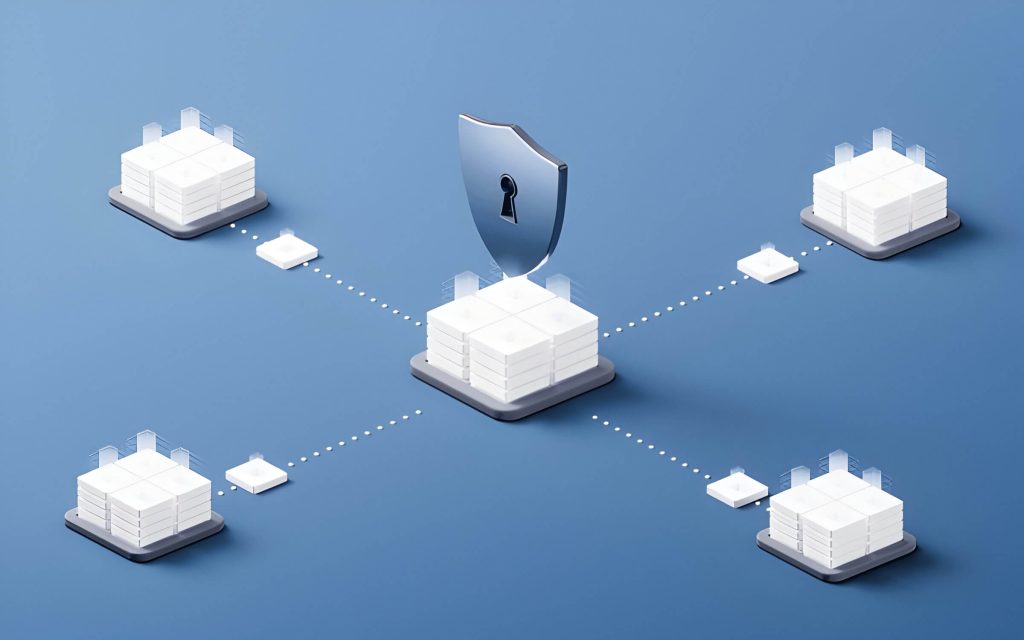How to Protect Your Website from Malware Attacks

Malware attacks pose a significant threat to websites in today’s digital world. As cybercriminals become increasingly sophisticated, website owners must remain vigilant in protecting their online assets. This article explores essential strategies for safeguarding your website against malware, covering topics from understanding common entry points to implementing robust security measures. By following these best practices and staying informed about emerging threats, you can significantly reduce the risk of malware infections and ensure the continued security of your website.
Understanding Malware and Its Threats to Websites
Malware, short for malicious software, is a broad term encompassing various types of harmful programs designed to infiltrate, damage, or disrupt computer systems and websites. Understanding malware is crucial for website owners and administrators to protect their digital assets effectively.
Common types of malware include viruses, worms, trojans, ransomware, and spyware. Each type has unique characteristics and methods of infection, but all pose significant threats to website security. Viruses replicate and spread through files, while worms propagate independently across networks. Trojans disguise themselves as legitimate software to gain unauthorized access, and ransomware encrypts data for ransom. Spyware covertly collects sensitive information without the user’s knowledge.
Websites are particularly vulnerable to malware attacks due to their constant exposure to the internet. Cybercriminals exploit vulnerabilities in website code, plugins, or content management systems to inject malicious software. Once infected, a website can become a vector for spreading malware to visitors, compromising user data, or being used in larger-scale cyber attacks.
To mitigate these threats, website owners should implement robust security measures, including regular software updates, strong authentication protocols, and comprehensive malware scanning tools. Additionally, educating staff about cybersecurity best practices and maintaining backups can significantly reduce the risk of successful malware attacks.
Common Entry Points for Malware in Websites
Websites face numerous threats from malware, and understanding the common entry points is crucial for maintaining robust security. Vulnerable plugins are often exploited by cybercriminals, as they can contain coding flaws that provide easy access to a site’s core. Outdated software is another significant risk, as developers frequently release patches to address newly discovered vulnerabilities.
Weak passwords remain a persistent issue, allowing attackers to gain unauthorized access through brute force attacks or credential stuffing. Unpatched systems, including content management platforms and server software, can harbor known vulnerabilities that malicious actors actively seek out.
Phishing attacks targeting website administrators or users can also lead to malware infections. These deceptive tactics often involve tricking individuals into revealing login credentials or installing malicious software.
By addressing these common entry points, website owners can significantly reduce their risk of malware infections and protect their digital assets from potential threats.
Essential Security Measures to Prevent Malware Infections
Protecting your website from malware attacks is crucial in today’s digital landscape. Implementing essential security measures can significantly reduce the risk of infections and safeguard your online presence. Regular updates are a fundamental step in maintaining your website’s security. Ensure that your content management system, plugins, and themes are always up-to-date to patch known vulnerabilities.
Strong passwords are another vital component of website security. Use complex, unique passwords for all accounts associated with your website, and consider implementing a password manager to keep track of them securely. Two-factor authentication adds an extra layer of protection by requiring a second form of verification beyond just a password.
Firewall protection is essential in blocking malicious traffic and preventing unauthorized access to your website. Invest in a reliable web application firewall (WAF) to filter out potential threats. Additionally, installing an SSL certificate encrypts data transferred between your website and its visitors, protecting sensitive information from interception.
By implementing these security measures, you can significantly reduce the risk of malware infections and ensure a safer online environment for both your website and its users.
Implementing Effective Malware Scanning and Detection Tools
Implementing effective malware scanning and detection tools is crucial for protecting your website from malicious attacks. Start by installing reputable antivirus software on your server and regularly updating it to ensure it can detect the latest threats. Utilize specialized malware scanners designed for websites, which can identify suspicious code and potential vulnerabilities in your site’s files and databases.
Integrate website security plugins that offer real-time monitoring and threat detection. These tools can alert you to any unauthorized changes or suspicious activities on your site. Implement file integrity monitoring systems to track and report any modifications to critical files, helping you quickly identify and respond to potential security breaches.
Consider deploying intrusion detection systems (IDS) that analyze network traffic and system logs to identify patterns indicative of malware or hacking attempts. These systems can provide early warnings of potential threats, allowing you to take swift action to mitigate risks.
Remember to regularly scan your website for malware, set up automated scans, and keep all software and plugins up-to-date. By combining these tools and practices, you can significantly enhance your website’s defense against malware attacks and maintain a secure online presence.
Best Practices for Website Backup and Recovery
Implementing a robust website backup and recovery strategy is crucial for protecting your online presence from potential threats and ensuring business continuity. Regular backups are the foundation of this process, allowing you to restore your website quickly in case of data loss or malware attacks. To maximize protection, consider storing backups offsite, either on a separate server or using cloud storage solutions.
Automation plays a key role in maintaining consistent backups. Set up automated backup schedules to ensure your website’s data is saved frequently without manual intervention. This approach minimizes the risk of human error and guarantees up-to-date backups are always available.
Developing a comprehensive disaster recovery plan is equally important. This plan should outline step-by-step procedures for restoring your website in various scenarios, including malware infections, server failures, or accidental data deletion. Regularly test your recovery process to identify and address any potential issues before a real emergency occurs.
To protect your website from malware attacks, implement strong security measures such as regularly updating software, using secure passwords, and employing reputable security plugins. Additionally, consider using a Web Application Firewall (WAF) to filter out malicious traffic and prevent common attack vectors.
By following these best practices for website backup and recovery, you can significantly reduce the risk of data loss and minimize downtime in the event of an unexpected issue, ensuring your online presence remains secure and operational.
Educating Your Team on Cybersecurity Best Practices
Educating your team on cybersecurity best practices is crucial for protecting your organization’s digital assets. Start by implementing comprehensive security awareness training that covers various aspects of online safety. Focus on teaching employees how to protect your website from malware attacks, emphasizing the importance of regular software updates and robust antivirus protection.
A key component of this training should be phishing prevention. Teach your team to recognize suspicious emails, links, and attachments, and provide them with practical examples of common phishing tactics. Additionally, educate them about social engineering techniques that cybercriminals use to manipulate individuals into divulging sensitive information.
Promote safe browsing habits by encouraging employees to use secure networks, avoid suspicious websites, and be cautious when downloading files or clicking on unfamiliar links. Emphasize the significance of proper password management, including the use of strong, unique passwords for each account and the implementation of multi-factor authentication where possible.
Regular refresher courses and simulated phishing exercises can help reinforce these cybersecurity practices, ensuring that your team remains vigilant and well-prepared to defend against evolving digital threats.
Monitoring and Responding to Potential Malware Threats
Protecting your website from malware attacks requires a proactive approach that combines real-time monitoring and swift incident response. Implementing a robust monitoring system allows you to detect potential threats early, giving you the advantage of addressing issues before they escalate. Regular log analysis is crucial in identifying suspicious activities and patterns that may indicate a malware infection.
Incorporating threat intelligence into your security strategy helps you stay ahead of emerging threats. By keeping abreast of the latest malware trends and attack vectors, you can better prepare your defenses and adjust your security measures accordingly.
Developing a comprehensive incident response plan is essential for effectively managing potential malware threats. This plan should outline clear procedures for containment, eradication, and recovery, ensuring a coordinated and efficient response when an attack occurs.
Conducting regular security audits is another vital component of malware protection. These audits help identify vulnerabilities in your website’s infrastructure and allow you to address potential weaknesses before they can be exploited by malicious actors.
By combining these strategies – real-time monitoring, log analysis, threat intelligence, incident response planning, and security audits – you can significantly enhance your website’s resilience against malware attacks and minimize the risk of successful breaches.
The Role of Web Hosting in Malware Protection

Web hosting plays a crucial role in protecting your website from malware attacks. Secure hosting providers offer robust server-level security measures that act as the first line of defense against cyber threats. These providers implement advanced firewalls, intrusion detection systems, and regular security updates to safeguard your website’s infrastructure.
Managed hosting services take security a step further by offering proactive monitoring and maintenance. They continuously scan for vulnerabilities, apply patches, and respond swiftly to potential threats. This level of vigilance significantly reduces the risk of malware infections and other security breaches.
Many reputable hosting companies also provide DDoS protection, which shields your website from distributed denial-of-service attacks that can overwhelm your server and potentially create openings for malware. This protection ensures your site remains accessible and secure even during large-scale attack attempts.
In the event of a malware infection, quality hosting providers often offer malware removal assistance. Their experienced teams can help identify and eliminate threats, minimizing downtime and potential damage to your website’s reputation.
By choosing a hosting provider that prioritizes security, you create a strong foundation for protecting your website from malware attacks. This proactive approach, combined with your own security practices, forms a comprehensive defense strategy against evolving cyber threats.
Maintaining a Proactive Approach to Website Security
Maintaining a proactive approach to website security is crucial in today’s digital landscape. By implementing robust security measures, regularly updating software, and staying informed about emerging threats, website owners can significantly reduce their vulnerability to cyber attacks.
It’s important to remember that website security is an ongoing process, not a one-time task. Regularly conducting security audits, monitoring for suspicious activities, and educating staff about best practices are all essential components of a comprehensive security strategy.
Additionally, investing in professional security services and tools can provide an extra layer of protection and peace of mind. While it may seem like an added expense, the cost of prevention is often far less than the potential losses from a successful cyber attack.
Taking a proactive stance on website security not only protects your digital assets but also builds trust with your users and customers. In an era where data breaches and cyber threats are increasingly common, demonstrating a commitment to security can be a valuable differentiator for your business or organization.
By staying vigilant and adapting to new security challenges as they arise, you can ensure that your website remains a safe and reliable platform for both you and your users.